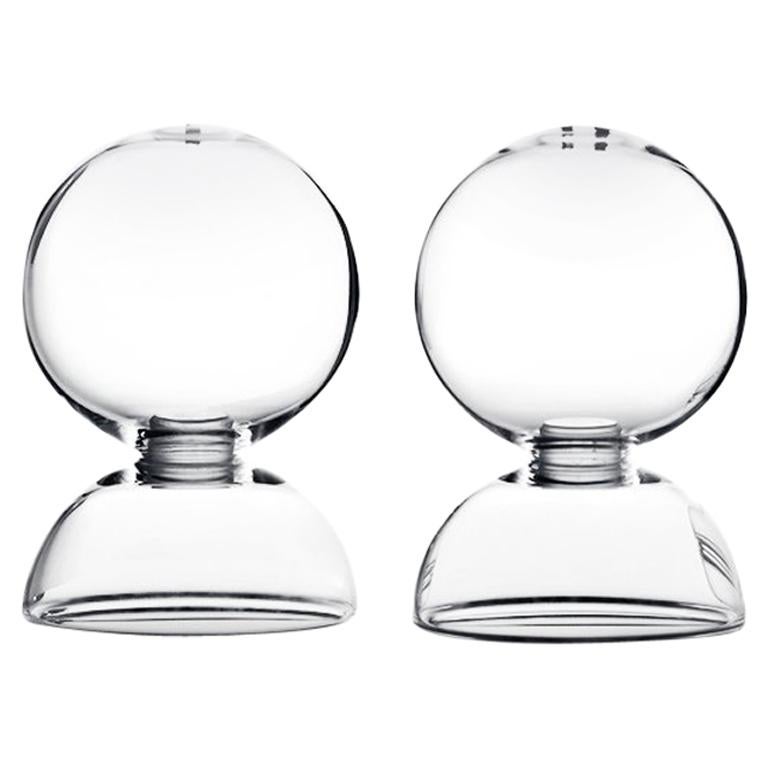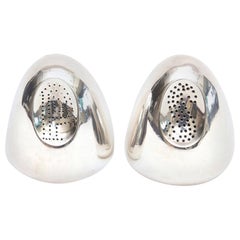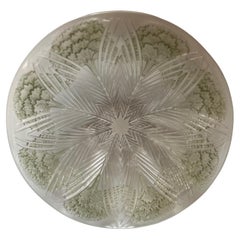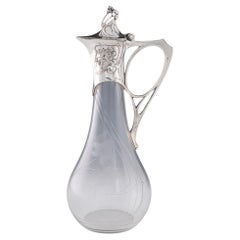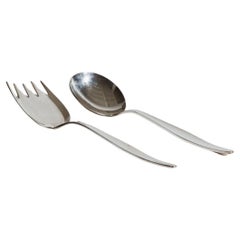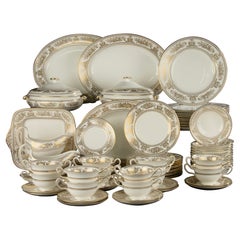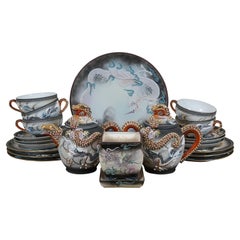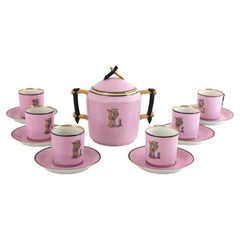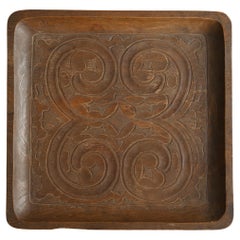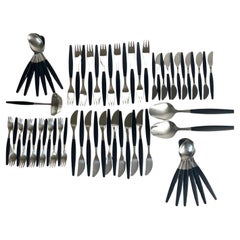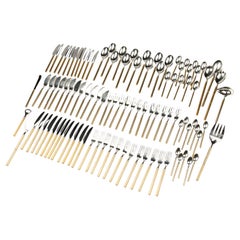Tableware
1960s English Neoclassical Vintage Tableware
Porcelain
Mid-20th Century Japanese Meiji Tableware
Porcelain
Early 20th Century French Art Deco Tableware
Gold Leaf
Early 20th Century Japanese Taisho Tableware
Wood
1950s Swedish Mid-Century Modern Vintage Tableware
Stainless Steel
1970s French Hollywood Regency Vintage Tableware
Gold Plate, Silver Plate
Late 20th Century American Post-Modern Tableware
Glass, Plastic
2010s Italian Tableware
Linen
Early 20th Century American Japonisme Tableware
Sterling Silver
19th Century English Antique Tableware
Porcelain
Early 20th Century Tableware
Metal, Sterling Silver
20th Century French Art Deco Tableware
Glass
Mid-20th Century Finnish Mid-Century Modern Tableware
Stoneware
1930s Art Deco Vintage Tableware
Glass
2010s Modern Tableware
Crystal
1960s German Mid-Century Modern Vintage Tableware
Porcelain
2010s Italian Tableware
Cotton
1970s Italian Space Age Vintage Tableware
Steel
2010s Ukrainian Minimalist Tableware
Brass, Steel
2010s Modern Tableware
Crystal, Stainless Steel
2010s Chinese Modern Tableware
Metal, Aluminum
2010s Modern Tableware
Stainless Steel
1950s Mid-Century Modern Vintage Tableware
Wood
Mid-20th Century Mid-Century Modern Tableware
Sterling Silver
2010s Chinese Modern Tableware
Metal, Aluminum
1930s Danish Art Deco Vintage Tableware
Sterling Silver
Late 19th Century Austrian Art Nouveau Antique Tableware
Metal
1950s German Mid-Century Modern Vintage Tableware
Crystal
1990s Mexican Modern Tableware
Silver
Late 20th Century Philippine Mid-Century Modern Tableware
Shell
1990s Japanese Modern Tableware
Silver Plate
21st Century and Contemporary Italian Modern Tableware
Gold Plate, Brass
Late 20th Century German Tableware
Gold, Gold Plate
Mid-20th Century German Tableware
Porcelain
21st Century and Contemporary American Post-Modern Tableware
Brass
Early 20th Century French French Provincial Tableware
Copper, Iron
Late 19th Century American Antique Tableware
Copper
20th Century French French Provincial Tableware
Porcelain
20th Century Danish Tableware
Porcelain
17th Century Antique Tableware
Pewter
Mid-20th Century Japanese Mid-Century Modern Tableware
Porcelain
20th Century Japanese Showa Tableware
Wood
21st Century and Contemporary Italian Tableware
Resin
Mid-20th Century German Mid-Century Modern Tableware
Ceramic, Pottery, Stoneware
2010s Italian Modern Tableware
Marble
2010s Italian Tableware
Linen
Mid-20th Century Austrian Mid-Century Modern Tableware
Stainless Steel
Early 20th Century German Tableware
Metal
2010s Mexican Modern Tableware
Resin
20th Century American Art Deco Tableware
Silver Plate
Late 18th Century European Antique Tableware
Bronze
2010s Dutch Modern Tableware
Travertine
1950s Industrial Vintage Tableware
Metal
20th Century Chinese Chinoiserie Tableware
Ceramic
2010s British Minimalist Tableware
Wood, Walnut, Bentwood
2010s Italian Modern Tableware
Marble
20th Century French Tableware
Gold
Mid-20th Century German Mid-Century Modern Tableware
Stainless Steel
20th Century Tableware
Sterling Silver
2010s American Mid-Century Modern Tableware
Crystal
Antique and Vintage Tableware
While it isn’t always top of mind for some, antique and vintage tableware can enhance even the most informal meal. It has been an intimate part of how we’ve interacted with our food for millennia.
Tableware has played a basic but important role in everyday life. Ancient Egyptians used spoons (which are classified as flatware) made of ivory and wood, while Greeks and Romans, who gathered for banquets involving big meals and entertainment, ate with forks and knives. At the beginning of the 17th century, however, forks were still uncommon in American homes. Over time, tableware has thankfully evolved and today includes increasingly valuable implements.
Tableware refers to the tools people use to set the table, including serving pieces, dinner plates and more. It encompasses everything from the intricate and elaborate to the austere and functional, yet are all what industrial product designer Jasper Morrison might call “Super Normal” — anonymous objects that are too useful to be considered banal.
There are four general categories of tableware — serveware, dinnerware, drinkware and, lastly, flatware, which is commonly referred to as silverware or cutlery. Serveware includes serving bowls, platters, gravy boats, casserole pans and ladles. Most tableware is practical, but it can also be decorative. And decorative objects count as tableware too. Even though they don’t fit squarely into one of the four categories, vases, statues and floral arrangements are traditional centerpieces.
Drinkware appropriately refers to the vessels we use for our beverages — mugs, cups and glasses. There is a good deal of variety that falls under this broad term. For example, your cheerful home bar or mid-century modern bar cart might be outfitted with a full range of vintage barware, which might include pilsner glasses and tumblers. Specialty cocktails are often served in these custom glasses, but they’re still a type of drinkware.
Every meal should be special — even if you’re using earthenware or stoneware for a casual lunch — but perhaps you’re hosting a dinner party to mark a specific event. The right high-quality tableware can bring a touch of luxury to your cuisine. Young couples, for example, traditionally add “fine china,” or porcelain, to their wedding registry as a commemoration of their union and likely wouldn’t turn down exquisite silver made by Tiffany & Co. or Georg Jensen.
It’s important to remember, however, that when you’re setting the dining room table to have fun with it. Just as you might mix and match your dining chairs, don’t be afraid to mix new and old or high and low with your tableware. On 1stDibs, find an extraordinary range of vintage and antique tableware to help elevate your meal as well as the mood and atmosphere of your entire dining room.
Read More
Paul Revere Crafted This Silver Coffee Pot 250 Years Ago
Perhaps best known as a Revolutionary War hero, Revere was also an accomplished silversmith, and this pot is now available on 1stDibs.
From Arne Jacobsen to Zaha Hadid, Top Designers Tackle Tableware
Clever objects like these make feasting even more festive.
